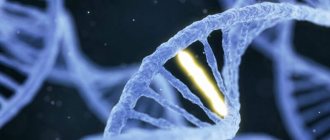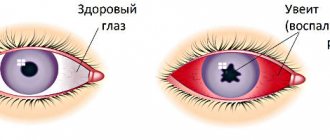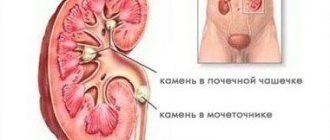- Circulatory and lymphatic systems
- How common is acute leukemia in adults?
- What causes acute leukemia and can it be prevented?
- How are acute leukemias in adults classified?
- Is early detection of leukemia possible?
- How is acute leukemia diagnosed?
- Treatment of acute leukemia in adults
- What happens after treatment of acute leukemia?
Leukemia (leukemia) is a malignant disease of white blood cells. The disease begins in the bone marrow and then spreads to the blood, lymph nodes, spleen, liver, central nervous system (CNS), and other organs. Leukemia can occur in both children and adults.
Leukemia is a complex disease and has many different types and subtypes. Treatment and outcome vary widely depending on the type of leukemia and other individual factors.
Circulatory and lymphatic systems
To understand the different types of leukemia, it is helpful to have basic information about the circulatory and lymphatic systems.
Bone marrow is the soft, spongy, inner part of bones. All blood cells are produced in the bone marrow. In infants, bone marrow is found in almost all the bones of the body. By adolescence, bone marrow is stored mainly in the flat bones of the skull, shoulder blades, ribs, and pelvis.
Bone marrow contains blood-forming cells, fat cells, and tissues that help blood cells grow. Early (primitive) blood cells are called stem cells. These stem cells grow (mature) in a specific order and produce red blood cells (erythrocytes), white blood cells (white blood cells) and platelets.
Red blood cells carry oxygen from the lungs to other tissues of the body. They also remove carbon dioxide, a waste product of cellular activity. A decrease in the number of red blood cells (anemia, anemia) causes weakness, shortness of breath and increased fatigue.
White blood cells help protect the body from germs, bacteria and viruses. There are three main types of leukocytes: granulocytes, monocytes and lymphocytes. Each type plays a special role in protecting the body against infection.
Platelets prevent bleeding from cuts and bruises.
The lymphatic system consists of lymphatic vessels, lymph nodes and lymph.
Lymphatic vessels resemble veins, but they do not carry blood, but a clear liquid - lymph. Lymph consists of excess tissue fluid, waste products and immune system cells
Lymph nodes (sometimes called lymph glands) are bean-shaped organs located along the lymphatic vessels. Lymph nodes contain cells of the immune system. They can increase in size more often during inflammation, especially in children, but sometimes their increase can be a sign of leukemia, when the tumor process has spread beyond the bone marrow.
Top
Diagnosis of acute myeloid leukemia
A thorough diagnosis is extremely important, since during its course the doctor can not only establish the very fact of the presence of the disease, but also understand which treatment is suitable for a particular patient.
Diagnosis begins with a routine physical examination and search for bruises, bruises or possible signs of infection, after which a number of procedures are prescribed:
- Blood tests
: allow you to see its composition, detect changed cells, and also evaluate the functioning of internal organs such as the liver or kidneys. - Collecting bone marrow samples
: this procedure is mandatory because this is where the disease begins to develop. Typically, samples are taken from the back of the pelvis or chest bones in two painful, simultaneous procedures. During aspiration, the patient lies on his side or stomach, the doctor cleans the skin of the thigh, numbs the tissue and inserts a thin needle into it, after which a small amount of liquid bone marrow is sucked out with a syringe. During a biopsy, the specialist also removes small pieces of bone using a thicker needle. - Cerebrospinal fluid test
- lumbar or spinal tap: ordered if a person has symptoms that may be caused by the spread of abnormal cells into the brain or spinal cord. To collect samples, the doctor numbs an area of skin in the lower back above the spine and inserts a small needle into the area between the vertebrae. - Molecular and genetic tests: needed to detect mutations, or changes, in genes. Doctors need such data to select the optimal treatment.
- Imaging tests - ultrasound, X-ray, MRI or PET scan: create images of the internal tissues of the body. They are not prescribed to detect leukemia per se, but to detect infections, other health problems, or determine how advanced the disease is if experts believe it has spread beyond the bone marrow.
Department of Oncohematology, Cancer Center Lapino-2.
How common is acute leukemia in adults?
In 2002, 8149 cases of leukemia were identified in Russia. Of these, acute leukemia accounted for 3257 cases, and subacute and chronic leukemia - 4872 cases.
It is estimated that 33,440 new cases of leukemia will be diagnosed in the United States in 2004. Approximately half of the cases will be acute leukemia. The most common type of acute leukemia in adults is acute myeloid leukemia (AML). At the same time, 11,920 new cases of AML are expected to be identified.
During 2004, 8,870 patients may die from acute leukemia in the United States.
The average age of patients with acute myeloid leukemia (AML) is 65 years. This is a disease of older people. The chance of developing leukemia for a 50-year-old person is 1 in 50,000, and for a 70-year-old it is 1 in 7,000. AML occurs more often in men compared to women.
Acute lymphoblastic leukemia (ALL) is more often diagnosed in children than in adults, and is most common before the age of 10 years. The probability of being diagnosed with ALL in a 50-year-old person is 1 in 125,000, and for a 70-year-old it is 1 in 60,000.
African Americans are 2 times less likely to develop ALL than the white population of America. Their risk of developing AML is also slightly lower than that of the white population.
With AML and ALL in adults, long-term remission or recovery can be achieved in 20-30% of cases. Depending on certain features of leukemia cells, the prognosis (outcome) of patients with AML and ALL may be better or worse.
Classification
The morphological substrate of acute leukemia is immature blast cells - undifferentiated or poorly differentiated. The French-American-British group of scientists (FAB) presented a classification of myeloid leukemia. It divides AML into 8 subtypes (M0 to M7). Lymphocytic leukemia according to FAB is divided into 3 types (from L1 to L3). This classification is based on the morphology and cytochemical staining of the blasts.
M0 - indicates acute myeloblastic leukemia with blast cells that do not differentiate
Most often diagnosed in the mature generation. Accounts for approximately 5-10% of all patients with AML. The aspirated red marrow from the bones is hypercellular and contains significant numbers of leukemic blasts. They are round cells of small to medium size with an eccentric nucleus with a flattened shape.
M1 - defines acute myeloblastic leukemia, in the absence of blast maturation. It is observed in all age groups, with the highest incidence in adults and children under one year of age. White blood cells are increased in approximately 50% of patients. Myeloperoxidase or Sudan black B stains in more than 3% of blasts, indicating granulocyte differentiation.
M2 - acute myeloblastic leukemia with signs of blast maturation. The symptoms of M2 AML are similar to type M1. White blood cells increase in half of the patients. Myeloblasts are commonly found on blood smears and may be the predominant cell type. Bone marrow is hypercellular.
M3 Acute promyelocytic leukemia. The average age and survival is about 18 months and occurs in younger people. M3 is of particular interest because it results in a fusion of the retinoic acid receptor alpha (RAR-alpha) gene on chromosome 17 with a transcription unit called PML (for promyelocytic leukemia) on chromosome 15.
M4 - acute myelomonocytic leukemia. The number of leukocytes, in most cases, increases due to monocytic cells (monoblasts, platelets, monocytes) to 5000/l or more. Anemia and thrombocytopenia are present in almost all cases. Bone marrow differs from M1, M2 and M3 in that monocytic cells exceed 20% of non-erythroid nucleated cells.
M5 - acute monocytic leukemia. Common symptoms include weakness, bleeding, and a diffuse erythematous skin rash. Extramedullary infiltration of the lungs, colon, meninges, lymph nodes, bladder and larynx, as well as gingival hyperplasia, are often observed. One of the diagnostic criteria for M5 is that 80% or more of all nonerythroid cells in the bone marrow are monocytic cells. (Characterized by the presence of all stages of development of monocytes, monoblasts, promonocytes, monocytes).
M6 - acute erythroleukemia. A rare form of leukemia that primarily affects peripheral cells. No cases have been observed in children. The most common manifestation is bleeding. The dominant change in peripheral blood is anemia with poikilocytosis and anisocytosis. Nucleated red blood cells exhibit an abnormal nuclear configuration. White blood cells and platelets are usually reduced. A diagnosis of erythroleukemia can be made if more than 50% of all nucleated cells in the bone marrow are erythroid and 30% or more of all remaining non-erythroid cells are blast cells.
M7 - acute megakaryoblastic leukemia (AMkL). It is rare and is characterized by transformation into chronic granulocytic leukemia (CGL) and myelodysplastic syndrome (MDS). Bone marrow biopsy shows an increase in the number of fibroblasts, as well as the presence of more than 30% blast cells.
Morphological FAB (French-American-British) classification of acute lymphoblastic leukemia:
* L1 - acute lymphoblastic leukemia with small blasts (usually children).
* L2 - acute lymphoblastic leukemia with large blasts (more often in adults).
* L3 - acute lymphoblastic leukemia with blast cells of the cell type found in Burkitt's lymphoma.
https://www.intechopen.com/books/acute-leukemia-the-scientist-s-perspective-and-challenge/classification-of-acute-leukemia
What causes acute leukemia and can it be prevented?
A risk factor is something that increases the likelihood of disease. Some risk factors, such as smoking, can be eliminated. Other factors, such as age, cannot be changed.
Smoking is a proven risk factor for acute myeloid leukemia (AML). Although many people know that smoking causes lung cancer, few realize that smoking can affect cells not directly exposed to smoke.
Cancer-causing substances found in tobacco smoke enter the bloodstream and spread throughout the body. One fifth of AML cases are caused by smoking. People who smoke should try to quit smoking.
There are some environmental factors that have been linked to the development of acute leukemia. For example, long-term exposure to gasoline is a risk factor for AML, and exposure to high doses of radiation (atomic bomb explosion or nuclear reactor incident) increases the risk of AML and acute lymphoblastic leukemia (ALL).
People who have had other cancers and were treated with certain anticancer drugs are at increased risk of developing AML. Most of these cases of AML occur within 9 years of treatment for Hodgkin's disease (lymphogranulomatosis), non-Hodgkin's lymphoma (lymphosarcoma), ALL, or other malignancies such as breast and ovarian cancer.
There is some concern regarding high-voltage transmission lines as a risk factor for leukemia. According to some data, in these situations the risk of leukemia is not increased or increased slightly. What is clear is that most cases of leukemia are not associated with high-voltage transmission lines.
A small number of people with very rare diseases or the HTLV-1 virus have an increased risk of developing acute leukemia.
However, most people with leukemia have no identified risk factors. The cause of their illness remains unknown to this day. Due to the fact that the cause of leukemia is unclear, there are no methods of prevention, with the exception of two important points: avoid smoking and contact with substances that cause cancer, such as gasoline.
Types of disease
Oncohematologists, depending on the nature of the cell pathology, distinguish two main types of acute blood leukemia.
- Lymphoblastic. Accounts for approximately 15-20% of cases. First, malignant cells affect the bone marrow, then spread to the lymph nodes, thymus gland and spleen, and then throughout the body. A characteristic feature is that mutated cells lack lipids, esterase, and peroxidase. It most often develops in children aged from one to six years and in adults after forty years. In turn, it is divided into two types: B-form with a favorable prognosis for a third of adults and two-thirds of sick children, and T-form with an extremely severe course and a sad outcome.
- Myeloblastic. The disease usually develops in adulthood and affects men and women equally. The treatment prospects are quite optimistic: partial remission can be achieved for 80% of patients, complete recovery occurs in at least 20%.
The full classification of acute leukemia includes many subtypes that differ in morphological, genetic and other characteristics that require specific treatment.
How are acute leukemias in adults classified?
Most tumors are classified into stages of disease (I, II, III, and IV), which are based on the size of the tumor and its extent.
This staging is not appropriate for leukemia because leukemia is a disease of the blood cells that does not usually cause tumor formation.
Leukemia affects the entire bone marrow and in many cases, by the time of diagnosis, has already involved other organs in the process. In leukemia, laboratory studies of tumor cells make it possible to clarify their characteristics, which help in assessing the outcome (prognosis) of the disease and choosing treatment tactics.
Three subtypes of acute lymphoblastic leukemia and eight subtypes of acute myeloid leukemia have been identified.
There are four main types of leukemia:
acute versus chronic
lymphoblastic versus myeloid
"Acute" means rapidly developing. Although the cells grow quickly, they are not able to mature properly.
"Chronic" means a condition where the cells appear mature but are actually abnormal (altered). These cells live too long and replace some types of white blood cells.
"Lymphoblastic" and "myeloid" refer to the two different types of cells from which leukemia arises. Lymphoblastic leukemia develops from bone marrow lymphocytes, myeloid leukemia arises from granulocytes or monocytes.
Leukemia can occur in both children and adults, but different types of leukemia predominate in one group or the other.
Acute lymphoblastic leukemia (ALL)
— Occurs in children and adults
- More often diagnosed in children
— Accounts for slightly more than half of all cases of leukemia in children
Acute myeloid leukemia (AML) (often called acute nonlymphoblastic leukemia)
- Affects children and adults
— Accounts for less than half of all cases of leukemia in children
Chronic lymphocytic leukemia (CLL)
- Occurs only in adults
— Detected twice as often as chronic myeloid leukemia (CML)
Chronic myeloid leukemia (CML)
- Mainly affects adults and is very rarely detected in children
— CLL is diagnosed twice as rarely.
Causes of acute myeloid leukemia
Doctors still do not know the exact reasons for the development of this disease - they only know about the factors that can trigger its occurrence:
- Age
: Acute myeloid leukemia occurs in both children and adults, but it is most often found in older people, and the average age of diagnosis is about 68 years. - Smoking
is the only proven lifestyle risk factor. A bad habit can cause not only cancer of the lungs, mouth or throat, since toxic smoke also affects cells that do not come into direct contact with it. The substances it contains are absorbed by the respiratory tract and distributed through the blood to various parts of the body, including the bone marrow. - Chemicals
: Long-term exposure to benzene, a solvent used in the rubber and automobile industries and oil refineries, has been linked to the development of leukemia. It is found in gasoline, cigarette smoke, car exhaust, some adhesives, cleaning products and paints. - Radiation
: Radiation exposure, including that received from radiation therapy for cancer, increases the likelihood of AML. - Blood diseases
are also considered risk factors that can provoke acute myeloid leukemia. - Gender
: Adult men are diagnosed more often than women, while among young patients there are approximately as many boys as girls. The reasons for such statistics are still unknown to scientists. - Genetic disorders
. The chance of developing AML is increased in those with various genetic disorders and characteristics, including Down syndrome Down syndrome is a genetic disorder that causes mental retardation, developmental delays, heart defects and a variety of other health problems. People with this developmental feature do not have 46 chromosomes, but one more - 47. and trisomy 8 Trisomy 8 is a genetic developmental disorder, the owners of which have not two copies of the eighth chromosome, but three. . - Treatment
: The disease is more likely to develop in cancer patients who are receiving certain chemotherapy drugs. These include cyclophosphamide, mechlorethamine, procarbazine, chlorambucil, melphalan, busulfan, carmustine, cisplatin, carboplatin, etoposide, teniposide, mitoxantrone, epirubicin and doxorubicin. - Family history
: Having a close relative - a parent, brother, sister or children - with this diagnosis increases the risk of developing this disease.
How is acute leukemia diagnosed?
Leukemia can be accompanied by many signs and symptoms, some of which are nonspecific. Please note that the following symptoms most often occur with diseases other than cancer.
Common symptoms of leukemia may include fatigue, weakness, weight loss, fever, and loss of appetite.
Most symptoms of acute leukemia are caused by a decrease in the number of red blood cells as a result of the replacement of normal bone marrow, which produces blood cells, with leukemia cells. As a result of this process, the patient's number of normally functioning red blood cells, white blood cells and platelets decreases.
Anemia (anemia) is the result of a decrease in the number of red blood cells. Anemia leads to shortness of breath, fatigue and pale skin.
A decrease in the number of white blood cells increases the risk of developing infectious diseases. Although leukemia patients may have very high white blood cell counts, these cells are not normal and do not protect the body from infection.
A low platelet count can cause bruising, bleeding from the nose and gums.
Spread of leukemia beyond the bone marrow to other organs or the central nervous system can cause various symptoms such as headache , weakness , seizures , vomiting , and disturbances in gait and vision .
Some patients may complain of pain in the bones and joints due to their damage by leukemia cells.
Leukemia can lead to an increase in the size of the liver and spleen . If the lymph nodes are affected, they may become enlarged.
In patients with AML, gum disease causes swelling, tenderness, and bleeding. Skin lesions are manifested by the presence of small multi-colored spots that resemble a rash.
In T-cell type ALL, the thymus gland is often affected . A large vein (superior vena cava), which carries blood from the head and upper extremities to the heart, runs next to the thymus gland. An enlarged thymus gland can put pressure on the trachea, causing coughing, shortness of breath, and even suffocation.
When the superior vena cava is compressed, swelling of the face and upper extremities is possible (superior vena cava syndrome). This can cut off the blood supply to the brain and be life-threatening. Patients with this syndrome should begin treatment immediately.
The presence of some of the above symptoms does not mean that the patient has leukemia. Therefore, additional studies are carried out to clarify the diagnosis and, if leukemia is confirmed, its type.
Blood test.
Changes in the number of different types of blood cells and their appearance under a microscope may suggest leukemia. Most people with acute leukemia (ALL or AML), for example, have too many white blood cells and not enough red blood cells and platelets. In addition, many white blood cells are blast cells (a type of immature cell that does not normally circulate in the blood). These cells do not perform their function.
Bone marrow examination.
A small amount of bone marrow is removed using a thin needle for testing. This method is used to confirm the diagnosis of leukemia and evaluate the effectiveness of treatment.
Lymph node biopsy.
In this procedure, the entire lymph node is removed and then examined.
Spinal tap.
During this procedure, a thin needle is inserted in the lower back into the spinal canal to obtain a small amount of cerebrospinal fluid, which is examined for leukemia cells.
Laboratory research.
To diagnose and clarify the type of leukemia, various special methods are used: cytochemistry, flow cytometry, immunocytochemistry, cytogenetics and molecular genetic studies. Specialists study bone marrow, lymph node tissue, blood, and cerebrospinal fluid under a microscope. They evaluate the size and shape of the cells, as well as other characteristics of the cells, to determine the type of leukemia and the degree of maturity of the cells.
Most immature cells are blast cells, unable to fight infection, which replace normal mature cells.
- X-rays are taken to identify tumor formations in the chest cavity, damage to bones and joints.
- Computed tomography (CT) is a special X-ray method that allows you to examine the body from different angles. The method is used to detect lesions in the chest and abdominal cavities.
- Magnetic resonance imaging (MRI) uses strong magnets and radio waves to produce detailed images of the body. The method is especially suitable for assessing the condition of the brain and spinal cord.
- Ultrasound examination (ultrasound) makes it possible to distinguish tumor formations and cysts, as well as the condition of the kidneys, liver and spleen, and lymph nodes.
- Lymphatic and bone system scan: In this method, a radioactive substance is injected intravenously and accumulates in the lymph nodes or bones. Allows differentiation between leukemic and inflammatory processes in lymph nodes and bones.
Symptoms of acute myeloid leukemia
Signs of leukemia appear approximately the same in both children and adults, and may look like this:
- Typically, one of the first symptoms is excessive fatigue and weakness
. They occur due to anemia - a decrease in the number of red blood cells that carry oxygen to all tissues of the body. - Dizziness
is another frequent companion of the disease. The most likely reason for their appearance is the same anemia, due to which the brain lacks O2. - Sudden weight loss
: As a rule, people lose weight already in the early stages of the disease, including due to decreased appetite. - Bruising or bleeding
: As acute myeloid leukemia progresses, the bone marrow produces fewer platelets, the cells responsible for blood clotting. When there are too few of them, a person bruises easily and has red or purple spots on the skin, blood comes from the nose and gums, traces of it are found in urine or stool, and menstruation becomes heavier. - Fever
at any time of the day and night sweats: often caused by infections that develop when the hematopoietic system is disrupted. - Pale or cold skin
, as well as sensitivity to cold temperatures, caused by anemia. - Bleeding, pain and swelling of the gums
: may be a sign of thrombocytopenia - a lack of platelets necessary for proper blood clotting. - Shortness of breath
is a feeling of lack of air: in the early stages of leukemia it is usually caused by a lack of oxygen-carrying cells, and in the later stages it can be caused by thromboembolism - blockage of the pulmonary artery. This serious complication causes a range of symptoms, such as pain in the chest, neck, shoulders, arms and jaw, anxiety and restlessness, arrhythmia - irregular heartbeat rhythm, tachycardia - too fast heartbeat, and fainting. - Frequent infections
are another sign of the disease, which appears due to the presence of a large number of altered white blood cells in the body. Their excess leads to a lack of normal neutrophils - cells that fight bacteria and fungi. - Leukostasis
: accumulation of altered cells in the vessels, which leads to stroke-like appearance. Stroke is a violation of blood circulation in the brain. symptoms: drowsiness, headaches, facial numbness, shortness of breath, visual disturbances, weakness and even speech problems. - Bloating
: Not the most common problem for people with acute myeloid leukemia. It occurs when abnormal cells accumulate in the spleen and liver, leading to poor digestion. - Rash or lumps
: Occurs in approximately 10% of patients. Their presence may indicate the spread of the disease to the skin. - Another possible symptom is pain in the joints and bones
due to the presence of a large number of altered cells in them. - Headaches
can be a sign of both anemia and brain damage. - Enlargement of lymph nodes
- our tiny “filters” that retain and neutralize dangerous substances. They often feel like small, pea-sized lumps under the skin in the neck, armpits, or groin.
Treatment of acute leukemia in adults
Acute leukemia in adults is not one disease, but several, and patients with different subtypes of leukemia respond differently to treatment.
The choice of therapy is based both on the specific subtype of leukemia and on certain characteristics of the disease, called prognostic features. These features include the patient's age, white blood cell count, response to chemotherapy, and whether the patient has previously been treated for another tumor.
Chemotherapy
Chemotherapy refers to the use of drugs that destroy tumor cells. Typically, anticancer drugs are prescribed intravenously or orally (by mouth). Once the drug enters the bloodstream, it is distributed throughout the body. Chemotherapy is the main treatment method for acute leukemia.
Chemotherapy for acute lymphoblastic leukemia (ALL).
Induction . The goal of treatment at this stage is to destroy the maximum number of leukemia cells in a minimum period of time and achieve remission (no signs of the disease).
Consolidation . The goal at this stage of treatment is to destroy those tumor cells that remain after induction.
Maintenance therapy . After the first two stages of chemotherapy, leukemia cells may still remain in the body. At this stage of treatment, low doses of chemotherapy are prescribed for two years.
Treatment of damage to the central nervous system (CNS) . Due to the fact that ALL often spreads into the membranes of the brain and spinal cord, patients are injected with chemotherapy into the spinal canal or given radiation therapy to the brain.
Chemotherapy for acute myeloid leukemia (AML):
Treatment of AML consists of two phases: remission induction and therapy after remission is achieved.
During the first phase, most normal and leukemic bone marrow cells are destroyed. The duration of this phase is usually one week. During this period and for the next few weeks, the white blood cell count will be very low and therefore measures will be required against possible complications. If remission is not achieved as a result of weekly chemotherapy, repeated courses of treatment are prescribed.
The goal of the second phase is to destroy the remaining leukemia cells. Treatment for a week is then followed by a period of bone marrow recovery (2-3 weeks), then chemotherapy courses are continued several more times.
Some patients are given very high doses of chemotherapy to kill all the bone marrow cells, followed by a stem cell transplant.
Side effects.
In the process of destroying leukemia cells, normal cells are also damaged, which, along with tumor cells, also grow rapidly.
Cells in the bone marrow, oral and intestinal mucosa, and hair follicles grow rapidly and are therefore exposed to chemotherapy.
Therefore, patients receiving chemotherapy have an increased risk of infection (due to a low white blood cell count), bleeding (low platelet count), and increased fatigue (low red blood cell count). Other side effects of chemotherapy include temporary baldness, nausea, vomiting, and loss of appetite.
These side effects usually go away soon after chemotherapy is stopped. Typically, there are methods to combat side effects. For example, antiemetic drugs are given along with chemotherapy to prevent nausea and vomiting. Cell growth factors are used to increase the white blood cell count and prevent infection.
You can reduce the risk of infectious complications by limiting contact with germs by thoroughly cleaning your hands and eating specially prepared fruits and vegetables. Patients receiving treatment should avoid crowds and patients with infection.
During chemotherapy, patients may be given strong antibiotics to further prevent infection. Antibiotics may be given at the first sign of infection or even earlier to prevent infection. If the number of platelets decreases, a platelet transfusion is possible, as is a transfusion of red blood cells if there is a decrease and the occurrence of shortness of breath or increased fatigue.
Tumor lysis syndrome is a side effect caused by the rapid breakdown of leukemia cells. When tumor cells die, they release substances into the bloodstream that damage the kidneys, heart and central nervous system. Giving the patient plenty of fluids and special medications will help prevent the development of severe complications.
Some patients with ALL, after treatment, may later develop other types of malignant tumors: AML, non-Hodgkin lymphoma (lymphosarcoma), or others.
Chemotherapy damages both tumor and normal cells. Stem cell transplantation allows doctors to use high doses of anticancer drugs to improve the effectiveness of treatment. And although anticancer drugs destroy the patient's bone marrow, the transplanted stem cells help restore bone marrow cells that produce blood cells.
Stem cells are taken from the bone marrow or peripheral blood. Such cells are obtained both from the patient himself and from a selected donor. In patients with leukemia, donor cells are most often used, since there may be tumor cells in the bone marrow or peripheral blood of patients.
The patient is prescribed chemotherapy with very high doses of drugs to destroy tumor cells. In addition to this, radiation therapy is given to destroy any remaining leukemia cells. After such treatment, the preserved stem cells are given to the patient in the form of a blood transfusion. Gradually, the transplanted stem cells engraft into the patient's bone marrow and begin to produce blood cells.
Patients who have received donor cells are given drugs to prevent the cells from being rejected, as well as other drugs to prevent infections. 2-3 weeks after the stem cell transplant, they begin to produce white blood cells, then platelets, and eventually red blood cells.
Patients who have undergone SCT should be protected from infection (stay in isolation) until the necessary increase in the number of leukocytes. Such patients are kept in the hospital until the leukocyte count reaches about 1000 per cubic meter. mm of blood. Then, almost every day, such patients are observed in the clinic for several weeks.
Stem cell transplantation is still a new and complex treatment option. Therefore, such a procedure should be carried out in specialized departments with specially trained personnel.
Side effects of TSC.
Side effects of TSC are divided into early and late. Early side effects differ little from complications in patients receiving chemotherapy with high doses of anticancer drugs. They are caused by damage to the bone marrow and other fast-growing tissues of the body.
Side effects can persist for a long time, sometimes years after the transplant. Late side effects include the following:
- Radiation damage to the lungs, leading to shortness of breath.
- Graft-versus-host disease (GVHD), which occurs only when cells are transplanted from a donor. This serious complication occurs when cells of the donor's immune system attack the skin, liver, oral mucosa and other organs of the patient. In this case, the following are observed: weakness, increased fatigue, dry mouth, rash, infection and muscle pain.
- Damage to the ovaries, leading to infertility and menstrual irregularities.
- Damage to the thyroid gland causing metabolic disorders.
- Cataract (damage to the lens of the eye).
- Bone damage; If the changes are severe, part of the bone or joint may need to be replaced.
Radiation therapy (the use of high-energy X-rays) plays a limited role in the treatment of patients with leukemia.
In adult patients with acute leukemia, radiation may be used if the central nervous system or testicles are affected. In rare emergency cases, radiation therapy is prescribed to relieve compression of the trachea by the tumor process. But even in this case, chemotherapy is often used instead of radiation therapy.
When treating patients with leukemia, unlike other types of malignant tumors, surgery is usually not used. Leukemia is a disease of the blood and bone marrow and cannot be cured with surgery.
During the treatment of a patient with leukemia, a small surgical intervention can be used to insert a catheter into a large vein to administer antitumor and other drugs and draw blood for research.
Palliative care
There are a large number of treatment methods available for the treatment of acute leukemia. This could be chemotherapy, targeted therapy, immunotherapy. All these methods can lead to remission even after multiple relapses. Therefore, as such, palliative therapy is rarely prescribed and, as a rule, in older patients who cannot tolerate severe treatment.
In this case, chemotherapy, drug therapy and radiation therapy are used.
Chemotherapy
Chemotherapy in palliative treatment is not carried out with the goal of achieving remission, but to keep the tumor clone from rapidly multiplying. At this stage, standard cytostatic drugs in lower dosages, immunotherapy, targeted therapy and other methods of antitumor treatment can be used.
Radiation therapy
Radiation therapy can be used to relieve pain in severe bone damage, as well as in the presence of extramedullary lesions.
What happens after treatment of acute leukemia?
After completion of treatment for acute leukemia, dynamic observation in the clinic is necessary. Such observation is very important, as it allows the doctor to monitor possible relapse (return) of the disease, as well as side effects of therapy. It is important to tell your doctor immediately if you experience any symptoms.
Typically, relapse of acute leukemia, if it occurs, occurs during treatment or shortly after its completion. Relapse develops very rarely after remission, the duration of which exceeds five years.
How is leukemia treated by stage?
Based on the patient’s condition and stage of cancer, he may be prescribed:
- Preventive chemotherapy of the central nervous system is indicated in the initial stages of the disease, as well as in some types of chronic leukemia.
- Chemotherapy with stem cell transplantation is an aggressive therapy against the tumor. Patients with late stage leukemia need it if their cells cannot repair themselves.
- Biological therapy is an innovative method of advanced foreign clinics; it is based on a course of complex drug treatment, as well as therapy with biological response modifiers. The technique is actively used in oncology clinics in Israel.
- Radiotherapy - irradiation of cancer cells helps to destroy them, and this prevents the risk of atypical elements moving into the brain and spinal cord.
Each type of treatment is carried out in two stages:
- Elimination of cancer elements.
- Recovery of the patient after completion of treatment procedures.
As a result, it is possible not only to stop the development of the disease, but also to prevent its recurrence. At the same time, the cost of cancer treatment abroad will significantly depend on a number of factors, among which the stage of the disease, the patient’s age, the presence of any diseases in the anamnesis, and others are important.
To learn more about the most advanced methods of treating leukemia, the specifics of diagnosis, as well as prices for various procedures, you just need to fill out the online form and a qualified medical representative will contact you.
Diagnostics
A patient with symptoms resembling acute leukemia is prescribed:
- blood tests - general, biochemical, coagulogram;
- removal of bone marrow from the ilium or sternum, followed by cytochemical analysis, immunophenotyping, and morphological analysis of cells;
- puncture of bone marrow and cerebrospinal fluid for cytological and histological examination;
- instrumental studies of internal organs - ultrasound, radiography, CT, MRI to assess the extent of their damage by malignant cells;
- consultations with a neurologist, otolaryngologist, ophthalmologist and other specialists.









